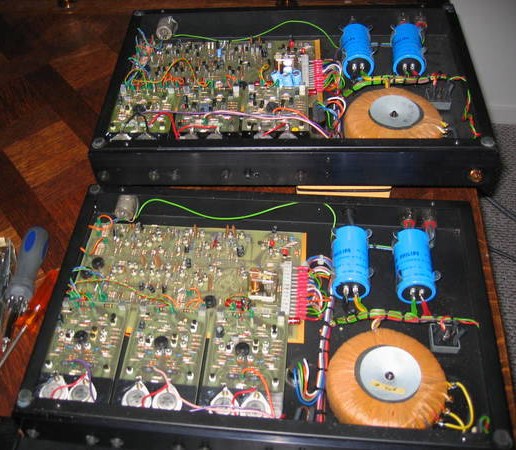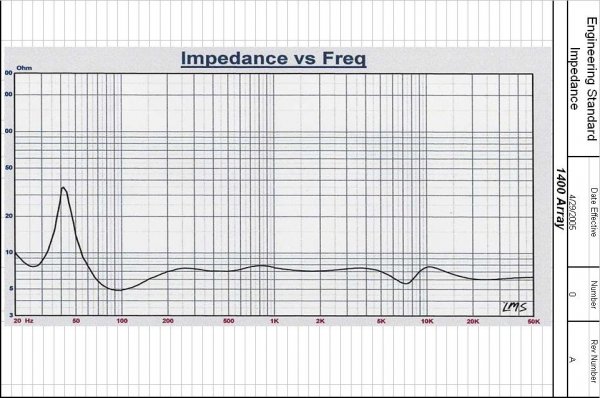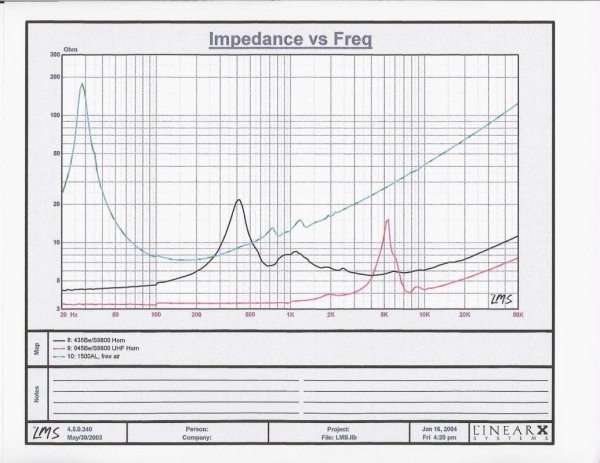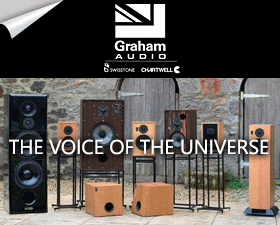When I was shopping, for the first time ever, for loudspeakers back in 2001 I wanted to know what is important in loudspeakers and what is not, so I started reading a lot (JAES, Wireless World, Audio mags, books). I also came across this question of passive vs active, and what I found convinced me that the active concept is inherently superior. I then bought active speakers, which additionally use DSP with FIR-filters.

With an active system you get more bass from the same cabinet size, which may solve some problems in domestic environments, a.k.a. WAF. Klein+Hummel had an active and a passive version of the same speaker (same cabinet, same drivers), the active version had more bass (56 vs 72 Hz). My wife was more than happy that I went from larger speaker to smaller ones.
Back then I posted on this issue on the Audio Asylum, and I thought that it might be of interest for this current thread:
Floyd Toole, “The acoustics and psychoacoustics of loudspeakers and rooms – the stereo past and the multichannel future”, Audio Engineering Society preprint 5201 (2000):
"As loudspeaker systems become active, with dedicated electronics, more of this will be possible. Dedicated electronics can make a good loudspeaker better, especially in a room."
John Watkinson, Wireless World 1999 :
"The fact that the amplifier in use is under the control of the designer means that over-specified power handling is unnecessary and a further gain of efficiency can be realised. When a loudspeaker and amplifier are designed together in this way, the overall cost will actually be less than that of a passive speaker driven by a generic amplifier. Once there is an economic advantage as well as a technical advantage, active technology becomes inevitable."
Bob Stuart (Meridian), “The case for active speaker systems”, Audio Magazine 1987, Sept., p.64
"Most readers will be familiar with the use of multi-way amplification as means to improve either the quality or quantity of sound from a given system."
"The main advantages of multi-amplification are that the loudspeaker can be more thoroughly designed, and that it can perform substantially better, especially in the areas of resolution, detail dynamics, and efficiency."
"Traditional bi-amping is a tricky business for the user, involving a lot of hardware - e.g., two or more power amplifiers, an electronic crossover, and a wealth of cables. In the process of choosing these items and setting the whole thing up, fatal flaws can be introduced."
"An active loudspeaker can give a much cleaner, more detailed and defined sound, and unlike most passive designs, this sound is consistent at different levels. In fact, although active speakers are more efficient and capable of producing very clear, loud sounds, a good active systems will surprise equally by its capacity to produce exquisitely clear results at LOW levels. Active loudspeakers also offer the user the benefits of being complete, self-contained, fully engineered (in the sense that the performance is optimized) and easy to install."
"In an active system, the designer has at his fingertips the ability to independently establish each essential parameter of the crossover. For example, the use of active filters can result in crossover shapes which are as simple or as complex as required by the acoustic system, and can allow independent adjustment of phase and amplitude. This can be achieved without consideration of matching efficiencies or such external parameters as impedance. The more sophisticated design level of the active system makes it a trivial task for the designer to provide for calibration and adjustment to enhance repeatability and consistency."
"By contrast, the active system enables each power amplifier to damp each driver over the whole of the audio band: of course, the close proximity of amplifier and drive unit also enhances the possibilities for good electromagnetic damping."
"In fact, the multi-amped loudspeaker system can be shown to be more efficient than its passive counterpart. In the first place, it is not necessary to over-engineer the power amplifiers built into an active system. In an integrated active system, each power amplifier can be exactly matched in terms of current delivery, thermal capacity and power supply to the drive units(s) with which it will work. This can considerably reduce waste caused by over-engineering in the basic driving system."
"This explains why active systems can be designed to work well with lower powered amplifiers, or produce surprisingly high levels for the apparent available amplification. If the example is carried on to three 25-watt amplifiers in a (active) tri-amped system, we might find that in order to get the same volume of sound in a passive loudspeaker system, we'd need a mighty 250-watt power amp ! It is clear from the above that although an active system is harder to design, there are efficiency benefits, and it is by no means a foregone conclusion that an active system need be more expensive to build."
"Put another way, a passive speaker delivering equivalent bass response would need to have eight times the volume or twice the linear dimensions."
Martin Colloms, “High performance loudspeakers”, Wiley 1991
"The consumer market at present shows reluctance to accept loudspeakers which employ active crossovers with accompanying multiple power amplifiers though this likely to be overcome in the future. However, in theory this technique offers the greatest scope for the advancement of the loudspeaker art and a number of designs are already in production. Important benefits include :
1) A reduction is intermodulation distortion in the accompanying amplifiers due to their operation in a narrower bandwidth.
2) Subjectively, the performance of well designed active systems exceeds expectation when comparison is made with the single amplifier/passive crossover alternative. Characterisations of "louder" and
"clearer" are frequently made, and are believed due to the reduction in "stressful" loading on the individual amplifiers. For example, when a main amplifier clips or enters distortion, the distortion harmonics will be clearly reproduced by the treble driver in a passive system. In contrast, the electronic configuration keeps the bass amplifier distortion to the bass driver and the treble range remains clear and undistorted (this is in fact a special case of the IM distortion improvement noted above). This quality advantage still holds true for two-way systems with a typical crossover at 3 kHz, provided that the bass/mid-unit has a reasonable intrinsic roll-off above the crossover point. If not, a simple passive low-pass filter could be fitted between it and the respective drive amplifier.
3) Bass equalization may be readily incorporated in the active crossover. This valuable if the low frequency alignment requires equalization.
4) The association between driver and amplifier may be beneficially extended to include the LF driver in the feedback loop of the matching amplifier (this results in the so called "motional feedback" or "servo bass" designs).
5) Variations in driver sensitivity may be easily controlled via low-level gain control potentiometers.
6) Because each power amplifier feeds a single drive the overload protection thresholds may be more precisely set than is possible with the normal crossover and single universal power amplifier.
7) The power amplifiers are directly connected across the terminals of each driver. The units are thus driven from constant voltage source which will tend to suppress the fundamental resonance via electromagnetic damping (the degree depends on the driver Q). In addition, the amplifier output impedance can be made negative, if required, providing further control at the fundamental resonance.
8) Electronic filters provide a considerable variety of equalization, response shape and phase characteristics which would be unwieldy if not impossible to realize with passive networks. In addition, electronic filters may be easily adjusted during production.
9) Delay stages may be provided electronically in the signal paths to specific drivers allowing equalization of time delays which may exist between units in the system when optimally mounted. Such compensation is useful for the maintenance of symmetrical directivity in the lateral plane over the several important octaves near the crossover frequencies. Time-delay correction can also facilitate minimum phase design (Linkwitz 1976).
10) Active filters potentially have lower distortion than passive ones, due to the elimination of cored inductors and the use of high quality film capacitors.
The whole thread can be read at
http://www.audioasylum.com/audio/speakers/messages/102781.html
Klaus





















